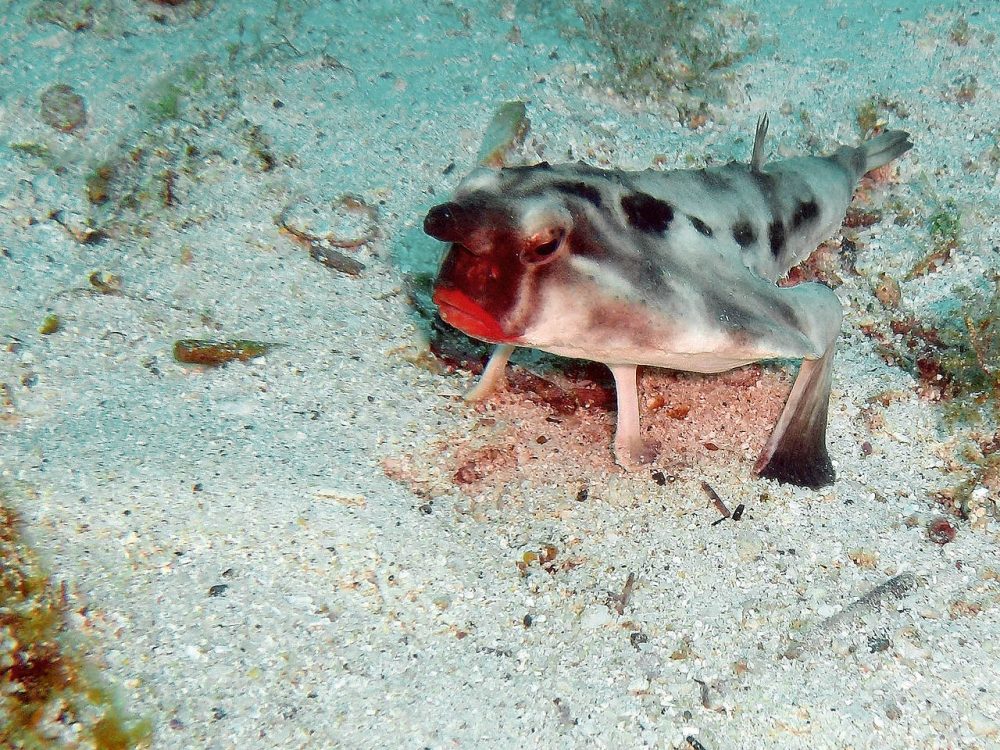
Red-lipped batfish
Closely related to other batfish but completely unique to Galapagos, the red-lipped batfish is a bottom dweller, and is usually found within the sandy bottom of reefs or on the ocean floor.
They can be found at depths of 3 – 76m in the Pacific Ocean around Galapagos. or around the edges of reefs up to about 120m deep.
The body colour of the red-lipped batfish is light brown and greyish on its back, with a white stomach. On the top side there is usually a dark brown stripe made of brown dots, starting at the head and going all the way down the back to the tail. The snout and horn of the red-lipped batfish is a brownish colour. As its name suggests, the batfish also has bright, almost fluorescent, red lips looking as though it has recently eaten a bloody meal, or is wearing some very bright lipstick. It reaches up to 20.3 cm in length.

©Rein Ketelaars
The red-lipped batfish has another strange trait. Although it is capable of swimming along the sea bed in search of food, the batfish’s fins are better adapted to work as pseudo-legs. These ‘legs’ are used to walk and perch on while it surveys its surroundings. Like other anglerfish, the red-lipped batfish has a structure on its head known as an illicium. This structure is thought to be employed for luring prey in. The species is a piscivore and insectivore, mainly feeding on other small fish and small crustaceans like shrimps and molluscs.
This second part of this fish’s scientific name, darwini, is actually a much more telling name than its common one. It is named after Charles Darwin because it is endemic to Galapagos where Darwin drew inspiration for his most famous theory, the theory of evolution, and because this fish is such a powerful example of the fascinating forms that life can take under the forces of natural selection.

